With billions of sites and pages across the web, grabbing and retaining users’ attention may be a challenging task.
What’s the reason for their interest? Definitely, it’s outstanding content. The deal is you can’t produce great content that drives traffic, engages, and converts leads blindly. A well-thought-out content development strategy is fundamental.
Here’s a complete guide to the top-notch content development strategy. You’ll learn:
- What is a content development strategy?
- What benefits do a proper content development strategy bring?
- Content development process step-by-step
Scroll down to find the answers!
What Is a Content Development Strategy?
The content development strategy definition is pretty straightforward. It’s the process of planning and creating different forms of content for some resources aimed at driving more traffic and engaging visitors. This includes research, tactical planning, and execution (content creation and distribution).
The content development process consists of two key phases:
- Research and planning phase: you come up with an actionable strategy, deciding when, where, and how to produce and spread the content.
- Production and distribution phase: now, you create the content sticking to the formed strategy and distribute it across the selected platforms.
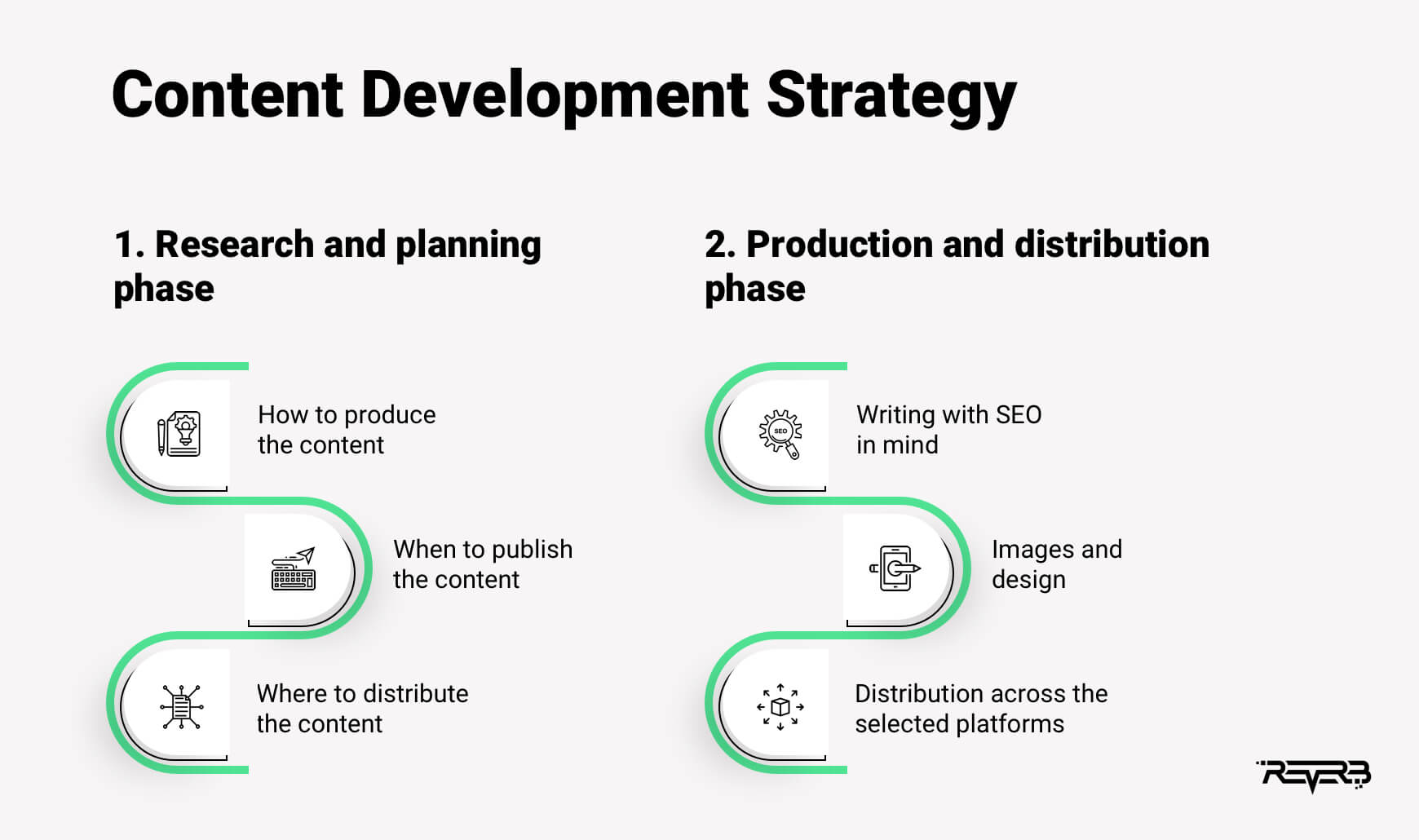
To succeed with the content development process, you must pay enough attention to both phases. Let me repeat, content creation requires a deliberate approach.
What Benefits Does A Proper Content Development Strategy Bring?
Now you may think, “Why should I spend time, money, and extra effort on forming a content development strategy? Isn’t it enough to put together a text and a couple of graphics and just publish them?” The answer is… No, it’s not! At least, not in the competitive digital space with 400 million active websites.
At first glance, it seems very simple, but in fact, the development of SEO-friendly and high-converting content is a very laborious and creative process.
However, it’s worth it. All your investments will be paid off, and over some time, you can expect to get the following benefits:
- Increasing your brand awareness
- Promoting your products or services to wide audiences
- Driving organic traffic and monetizing it (e.g., by offering sponsored posts)
- Building your business’ credibility and authority
- Improving click-through-rate and conversion rates
- Developing your brand’s unique tone of voice and messaging
- Boosting lead generation and sales
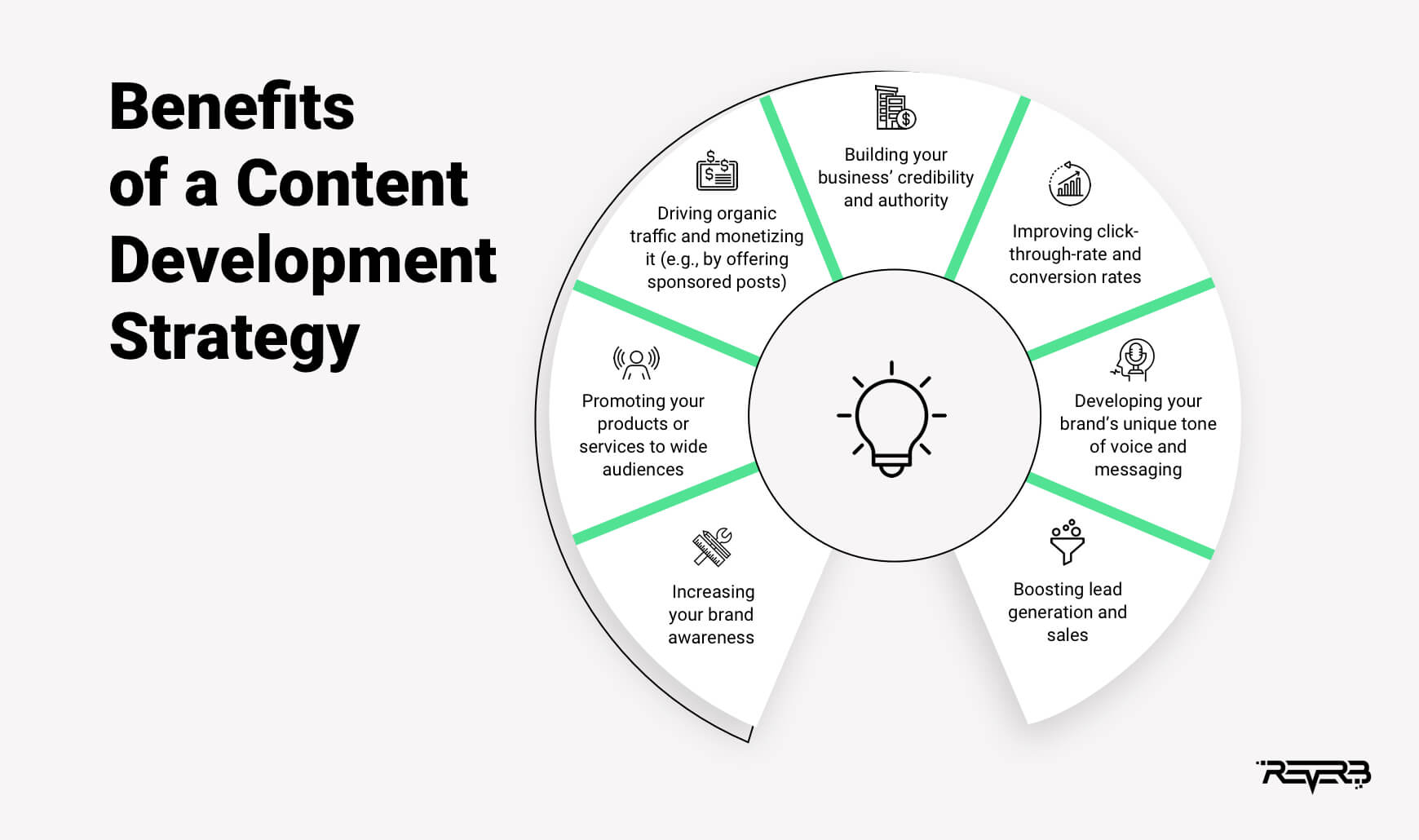
As you can see, not only will the proper strategy remove the chaos from your workplace, but it will also help you use the content as a prestigious brand representative and money-maker.
Step-by-Step Content Development Process
Now that we learned content development basics and their role in your business, let’s move to the practical and the most interesting part – the content development process explained step by step.
So, how do you create a content development strategy from scratch?
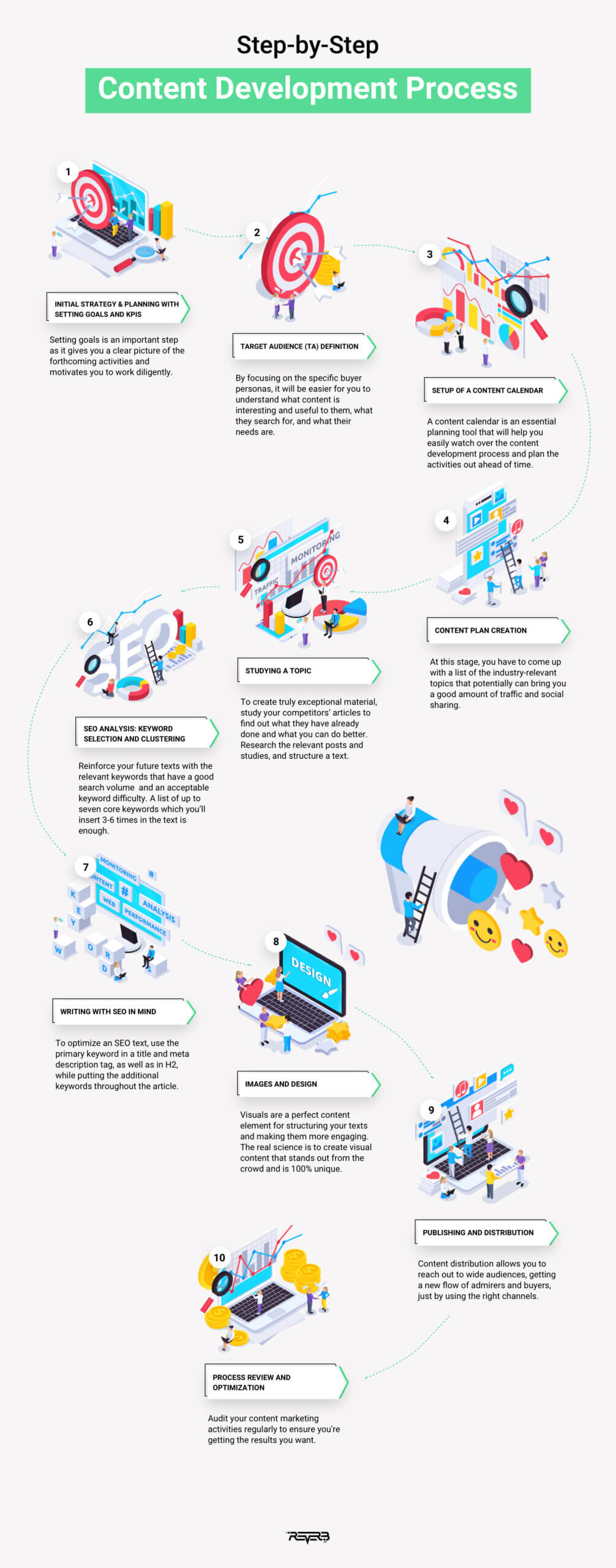
Step 1. Initial strategy & planning with setting goals and KPIs
Where to start your journey? Of course, with the definition of the core objectives and metrics.
Setting goals is an important step as it gives you a clear picture of the forthcoming activities and motivates you to work diligently.
Ask yourself these three questions to get started:
- What types of content can you produce that will be better than your competition?
- What value can your content provide?
- What is the ultimate goal of your content strategy? What outcomes do you expect, and what do you want to achieve in the upcoming year?
Example of effective goal-setting:
- Purpose: To become a leader in your niche.
- Objective 1: Gain $600,000 in online courses by December 31, 2021.
- Objective 2: Bring the site to the top in Google’s results by key commercial keywords by July 1, 2021.
- Objective 3: Increase the number of loyal email subscribers to 3,000 by October 2021.
See! That has never been easier.
The other thing to consider is KPIs, which stand for Key Performance Indicators. They are critical in every area of business, particularly in content development strategy. For instance, if you are using content to improve your website’s SEO ranking, you can use a rank tracking tool to measure progress and use those insights to tweak your strategy for better outcomes. Content creation is all about getting measurable results that boost sales as well as building your unique brand.
Pro tip! Choose and gather the KPIs that apply to your content development strategy and put them in one comprehensive KPI dashboard software. Focus on those metrics that matter most (followers, growth, influence, downloads, time on page, shares, inbound links, cost per lead, etc.)
Step 2. Target audience (TA) definition
Another fundamental stage in the formation of a content strategy is outlining a portrait of your target audience (buyer personas).
In short, a target audience is a group of people who potentially need your service or your product. By focusing on the specific buyer personas, it will be easier for you to understand what content is interesting and useful to them, what they are searching for, and what their needs are. By creating content without TA analysis, guided solely by personal preferences and assumptions, you risk wasting time, money, and effort. But that’s not the trap you want to fall into, right?
Let’s look at an IT development company as an example. In this case, the target audience divides into two major groups – potential clients and people who are professionally involved in the IT industry. Therefore, while planning and creating content for tech firms, you have to keep in mind that it should be professional and industry-specific to be useful for programmers but, at the same time, understandable for clientele without special IT knowledge.
The following parameters will help you define your target audience:
- Characteristics (demographic, geographic, economic, psychographics, etc.);
- The idea of the “quality” of a product (service);
- Motivation to buy or achieve a certain thing/goal;
- Methods and ways of making a purchase or performing a specific activity;
- Preferences for the locations.
Pro tip! When it comes to collecting information about your potential audience, try out Google Demographics. With the help of web analytics, you can find out information about the age, gender, and geolocation of potential customers, as well as the interests of your audience. Find out what social networks they prefer and what devices they use most often.
Step 3. Setup of a content calendar
A content calendar is an essential planning tool that will help you easily watch over the content development process and plan the activities out ahead of time.
With it, it’s much more convenient to control the content production at each stage, especially when they’re all performed by different executors.
Reporting increases the level of responsibility; thus, an article scheduled for a specific date is much more likely to be written on time than one that is simply scheduled for “the next few weeks.” Over some time, you can track whether the posting on a particular channel was effective or not.
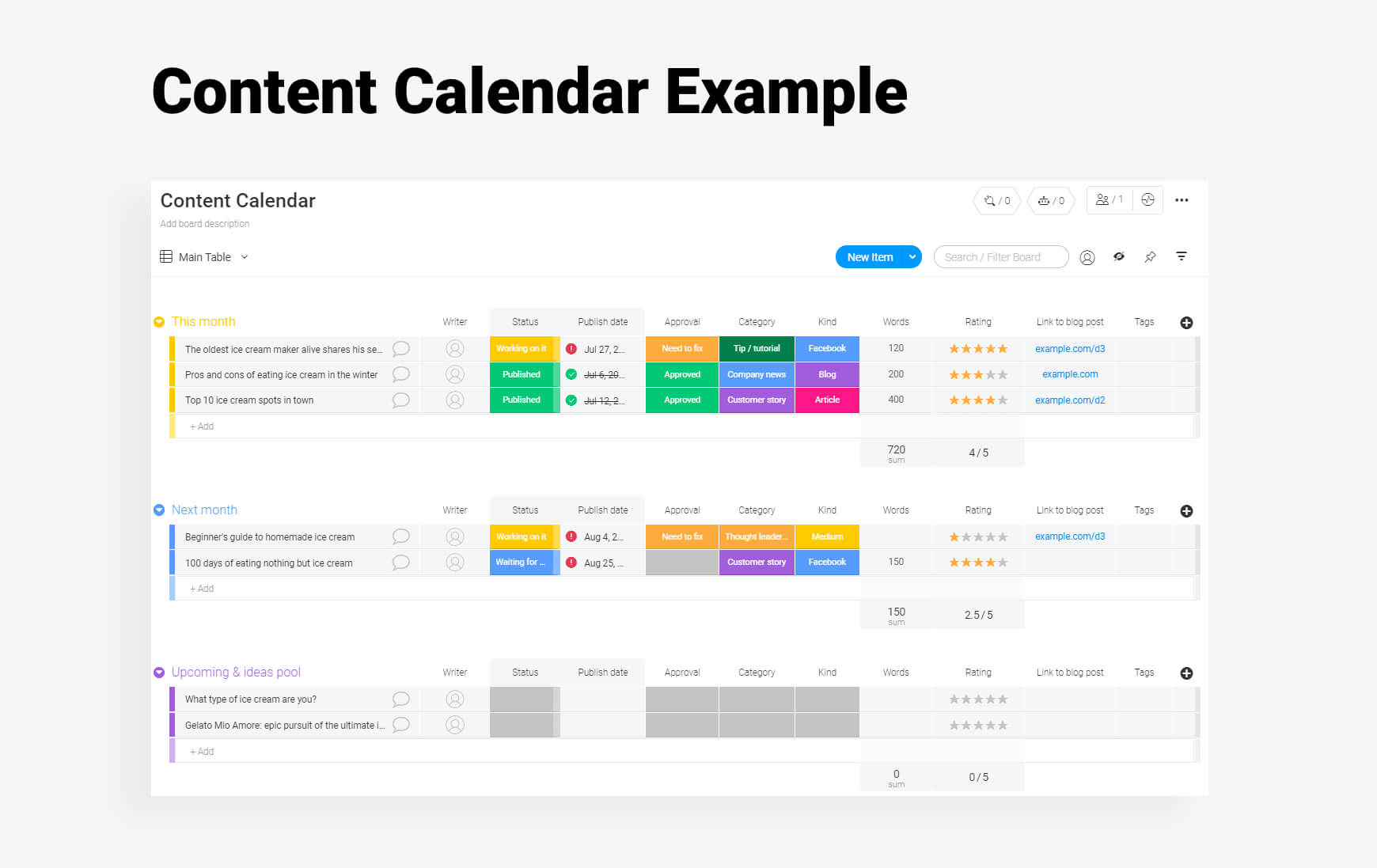
Example of a content calendar built on Monday.com
What should be included in the content calendar?
Think about adding the following fields to your content calendar (they’re optional and customizable):
- Month
- Topic
- Publication date
- Links
- Status
- Performer
- Live link
- Update date
- Distribution by channels (e.g., an email blast, Facebook post, etc.)
Step 4. Content plan creation
When you already know your goals and the audience well, it’s time to proceed to the execution phase, which starts with the content plan creation. At this stage, you have to come up with a list of industry-relevant topics that potentially can bring you a good amount of traffic and social sharing.
You shouldn’t select the article topics blindly. Your materials have to respond to the users’ interests and needs, and they should be SEO-friendly (we’ll talk about this a bit later). For this, nothing can help you more than a competitor’s analysis. With no need to reinvent the wheel, you can use proven ideas and approaches to content creation by spying on your competition.
Try such tools as Ahrefs and Google Trends to define the topics that are of great interest on the market today and that have proven their high effectiveness on competitors’ blogs. In Ahrefs, go to the ‘Site Explorer,’ type in your competitor’s domain, and view its ‘Top pages.’ That’s how you can find out the articles which bring the greatest share of traffic to the site. Reveal the most popular topics on your blog, too.
When you compose a list of topics (for a week, a month, or a few months ahead), decide on the type of content that you want to create around it.
Below is the list of the most popular content types according to users’ preferences and engagement:
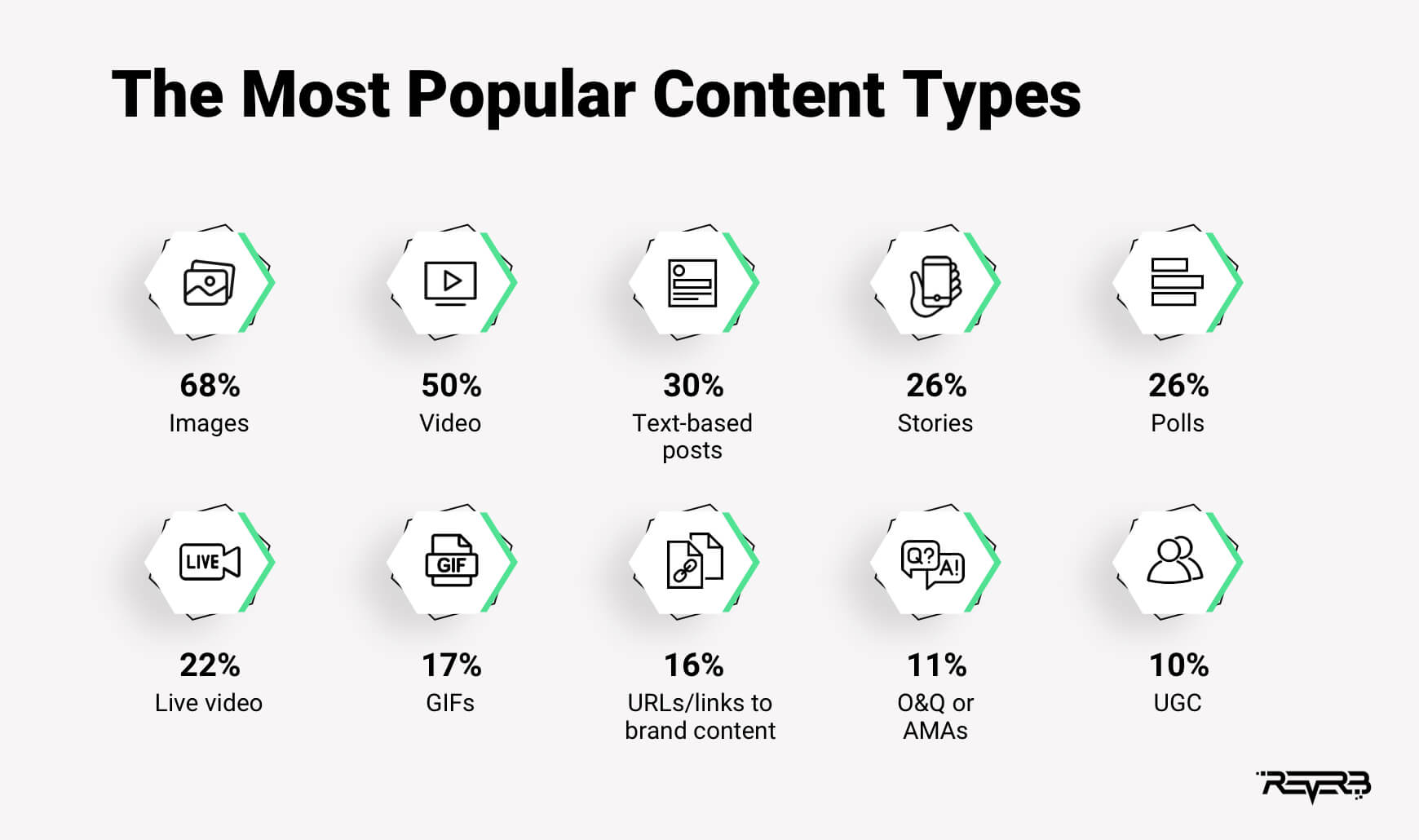
Not all types of content work effectively in different niches. For instance, visual content is more suitable for tourism, entertainment, and the beauty industry, but in the business-to-business strategy, one can not do without a good text component and videos.
Pro tip! By combining different types of content, such as informational, marketing, entertaining, engaging, and viral, you can sell products and promote your brand with a higher likeability. This will keep your readers 10 times more engaged.
Step 5. Studying a topic
So, you’re starting to work on a specific piece. You have a broad topic and a general idea. To create truly exceptional material, study your competitors’ articles to find out what they have already done and what you can do better. Research the relevant posts and studies, and structure a text. Move on to gathering all necessary information that you can use to support your own opinion on a given topic.
To make your piece of content more scalable and useful than the competitors’, think about adding the next components:
- Quotes
- Statistics
- Examples
- Expert opinions
- Interesting stories
- Exclusive interviews
Step 6. SEO analysis: keyword selection and clustering
The selection of the keywords and keyword clustering completely depends on your content plan. The idea is to reinforce your future texts with relevant keywords that have a good search volume (SV – the average monthly number of searches for a keyword) and acceptable keyword difficulty (KD – shows how hard it is to rank in the top 10 organic search results for a keyword, based on the number of competitive pages).
When selecting the keywords, you should also pay attention to the search intent that a keyword is used for. This is the user’s purpose they have in mind when typing in a concrete query: navigational, informational, transactional, or commercial. Make sure that your content development strategy is based on the keywords with all these search intents, so it’s not oversalesy or hyper-educational.
Here are a few questions to help you as you brainstorm keywords:
- When someone searches for this keyword, what are they expecting to find?
- Is the keyword relevant to the products you’re selling?
- How do you want your pages to be discovered on the web?
- How do your customers talk about your product or service?
Use Ahrefs to brainstorm keyword ideas (‘Keywords Explorer’ -> ‘Search suggestions’) and check if the parameters (SV, KD, clicks, etc.) of every keyword suit your strategy.
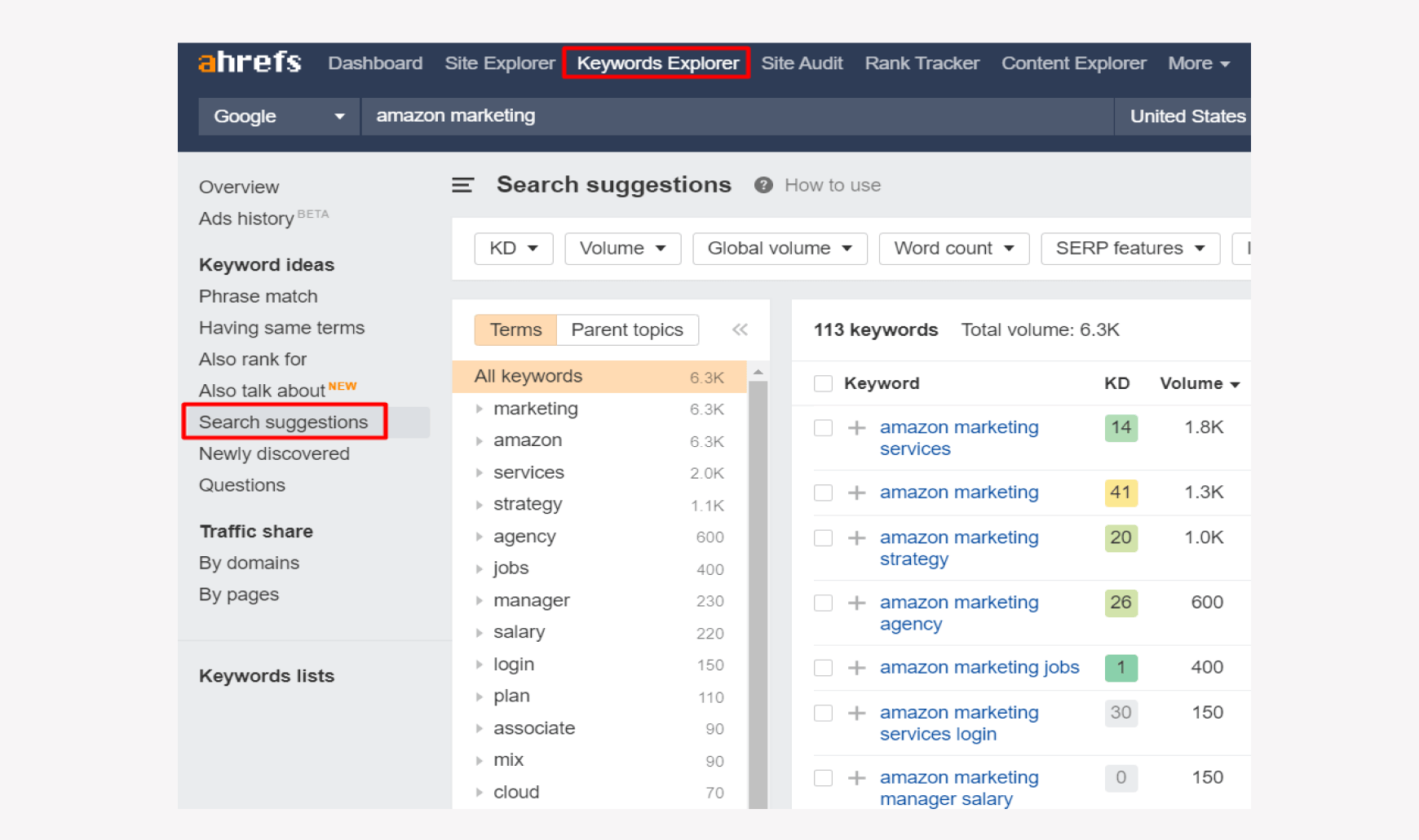
Keyword research in Ahrefs
Then, divide the selected keywords into groups, arranging dedicated keyword clusters. They’ll be the basis of your future posts. A list of up to seven core keywords which you’ll insert 3-6 times in the text is enough.
Step 7. Writing with SEO in mind
Once you research the topic and pick the quick-win keywords, it’s time to start writing the best-in-class article, following the pro copywriting tips and SEO rules.
Pro tips! Take these simple actions to change the picture of your Google rankings significantly and push your pages higher:
- Conduct basic keyword research (up to 7 keywords/post);
- Use the primary keyword in a title and meta description tag, as well as in H2 and URL, while putting the additional keywords throughout the article;
- Pay close attention to the keyword frequency and density. Sprinkle the keywords naturally throughout page text to avoid them looking like spam;
- Include internal links to self-promote the content on your website as well as external links that are related to the other trusted sources;
- Create catchy meta tags optimized for SEO to grab users’ attention right away;
- Make your website as secure as possible (is an SSL Certificate installed?);
- Enhance your website’s speed and readability;
- Optimize your content for mobile.
Step 8. Images and design
Visuals are a perfect content element for structuring your texts and making them more engaging. The real science is to create visual content that stands out from the crowd and is 100% unique. Many people give up at this step because they don’t know how to create content that boasts of original ideas, but I highly recommend doing so no matter what. Feel free to experiment! And here are some fascinating design examples for your inspiration.
You should aim for exclusively designed content with high-quality visuals. Incorporation of the interactive solutions into your materials will help you build a connection with your audience and level up the quality of interaction across all mediums and platforms.
Pro tip! When you create original infographics, maps, and visuals that people adore and find useful, there’s a good chance they will share them on their pages and credit you as the creator, meaning building backlinks and passing more traffic to your site.
Step 9. Publishing and distribution
Some people can independently go to your site or their business pages and see your posts. Meanwhile, there is a great share of your target audience that is potentially interested in your content, but they have no clue you exist at all. Content distribution allows you to reach out to such people. You can get a new flow of admirers and buyers just by using the right channels.
Here are a few ways you can efficiently distribute your content:
- Social networks: If your company has profiles on Facebook or Instagram, be sure to post updates about new articles on your blog or share other produced materials.
- Corporate newsletters: Set mailing campaigns to inform subscribers about your updates. You can send such a newsletter weekly (if you are ready to write at least one article per week), or send letters every two weeks/month.
- Search Engine Marketing (SEM): Have you written an impressive article or a dedicated landing page that you want to tell the whole world about? Launch contextual or targeted advertising for distributing this new material. Come up with a powerful headline and an attractive description. That’s how you can get new followers (if advertising is launched on Facebook or Instagram) and/or traffic to the site (if advertising is in Google Ads or Yandex.Direct).
Step 10. Process review and optimization
Content creation is a never-ending process that restarts as soon as the previous campaign is completed. Audit your content marketing activities regularly to ensure you’re getting the results you want.
If your content doesn’t deliver the expected results and KPIs, you need to rethink your content plan or some steps of your content creation process. If you achieve your objectives, keep following the same approach.
Conclusion
The development of a content strategy allows you to correctly allocate company resources for the production and circulation of content. Having a dedicated content team rather than a solo writer will help you produce much more useful and high-quality content for your audience in a short time.
It’s always better to trust complex tasks to professionals. Thus, it would be a winning decision to trust your content marketing tasks to an experienced digital marketing agency, such as ReVerb. Drop us a line to get professional assistance in the creation of a powerful content development strategy for your business!










